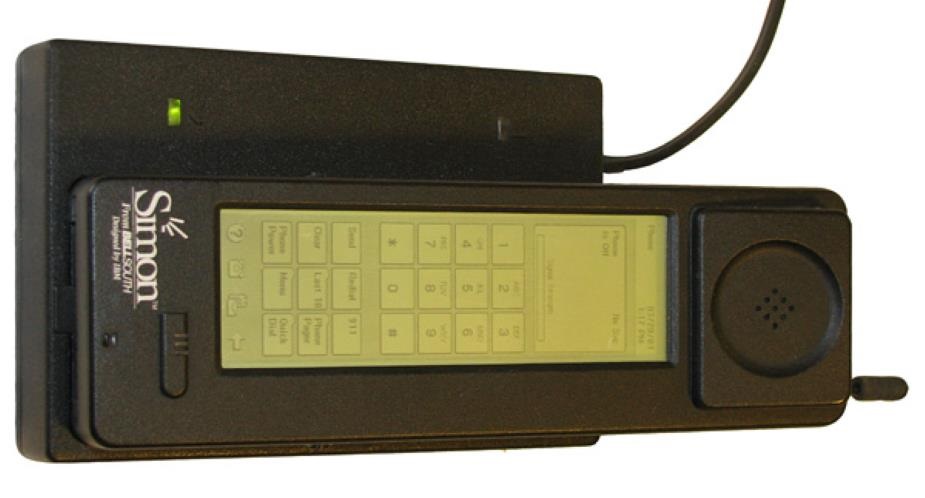Exaud Insights
The History of Mobile Video Games: Part I
Posted on February 3, 2020 at 6:05 pm by
Welcome to a three part journey on the History of Mobile Gaming: from the good old Nokia Snake to addictive smart phone games, we’ll guide you through the creation of one of the most used features in mobile.
Chapter 1
Mobile Gaming describes the concept of playing Video-Games on a Mobile Phone. A given in the age of smartphones, but an impressive feat before the turn of the millennium.
In 1993 Siemens managed to run “Klotz” (a version of Tetris) on the S1, however, there was a registered patent for games on mobile phones, and the company was not convinced it would be a positive investment, so the game was deleted…except it really wasn’t. Instead of deleting all the work they had put into running the game, the engineers decided to hide it in the phone, if you know the “correct technique” (and you own a 600-gram black and white phone released to the market in 1994) you can play it.
In the same year, in November, IBM showed the world the first smartphone, the Simon Personal Communicator (or IBM Simon) allowed the user to make phone calls, send emails, use a calculator, schedule appointments and more, all in one device. It also had a game called Scramble. It played like a 15-puzzle and would allow the player to choose from multiple backgrounds and play using the touchscreen pen.
For some time, however, it was believed that the first mobile game to be commercially available was Tetris on the Hagenuk MT-2000. Launched in 1994 the MT-2000 was one of the first phones to have soft keys (keys which change functions depending on the UI context) but it was also the first to have a built-in antenna (it ran along the side of the phone instead of sticking out of the top). Sadly, mobile gaming was not the selling point that is today and the MT-2000 would not be successful and Hagenuk would eventually abandon the phones market and gaming would be abandoned on mobile for a while.
To be awoken in 1997 by a Finnish telecommunications company which you might have heard about. Nokia would release their 6110 model with a pre-installed game called Snake. Taking inspiration from Blockade and Nibbler, Snake was a simple game with short game time, perfect for mobile, it would prove to be a bigger success than its predecessors and Nokia would be a successful mobile company until today.
(image via MEL Magazine)
For a while games on mobile devices remained on this path, every year more and more phones would release with their own games, until, in the early 2000’s new technologies would emerge which would allow developers to create their own games and phone users to buy and play any games on their phones.
End of Part I.
(Don’t forget to check Chapter 2 and Chapter 3 afterwards!)
Check our blog for more posts like the one you just read!
Exaud Insights, Fresh News
2020 (Expected) Technology Trends
Posted on January 27, 2020 at 5:55 pm by
With the beginning of a new year we start wondering what kind of tech surprises might be reserved for 2020. After all, we’re welcoming a new decade and expect to see big things happening in the next 10 years.
We can’t predict the future but we can speculate and wonder what might be some of the trends that will take part in next year’s tech development.
Mobile
5G
Ultra low latency, massive capacity, multi gbps peak rates and, of course, uniform user experience: 5G looks extremely promising and suitable for our growing connectivity demands – from personal usage to industrial processes and applications, 5G equals connectivity between billions of devices, even without human intervention, at a scale not seen before.
Wearables
Android Wear vs All Things Apple
Google’s acquisition of Fitbit opens a window to possibly make Wear OS an interesting platform. Still, the fact that Wear OS pairs with both Android and iOS devices is a big win for the ‘droid’ family. Despite the fact that Apple is still able to keep itself as number one when it comes to wearables (and yes, we’re also talking about AirPods), Google’s wear OS might start making moves with a cleaner look and a wider variety of voice control options that revealed to be as practical as they can be.
Smart Speakers
Although we can’t deny smart speakers success not everything about them comes across as positive.
Not only are they smart speakers, they’re listeners as well, and even we find funny that toddlers are placing weird orders through their parents’ Alexa, truth is, that what makes them so popular, also makes them insecure.
They’re always listening despite what might be said. Passive listening is required in order for them to assist users when the wake up call comes in, and tech companies already admitted to monitor connected devices, which creates privacy concerns as well.
Connection to door locks, home security systems and surveillance cameras is also a risky behaviour that has been discussed and encourages improvements in order to prevent hacker attacks.
Smart Headphones
When it comes to smart headphones, the mystery remains.
Whether we’re still deciding if they’re really able to change the way we listen to music, usually there’s only two relevant factors when you have to decide what type of smart headphones you’ll be purchasing – style (do they make you look neat and cool?) and brand loyalty.
However, some players are trying to change that, such as Funky Sound and their headphones with touchscreen incorporated. What they’re aiming for is to create headphones with a fully integrated system, where you’ll be able to run apps, use various streaming services, store files and even take advantage of voice integrated assistants, such as Alexa and Google Assistant.
And of course, we should also mention Samsung Galaxy Buds, that debuted the year when it came to smart headphones.
All Things Mobile
We’re controlling our houses with smartphones. We use the UBER app instead of taking cabs. We shop through apps and pay groceries using nothing but our phones. It’s pretty obvious that nowadays leaving the phone at home leads to a more complicated situation than it’d be a few years ago, right? Right.
The crescent trend about investing in mobile developing seems to maintain relevant until 2020. According to APP Annie and a region-specific revenue, in 2022, consumers in the USA are projected to spend over $34 billion dollars on mobile apps via app stores.
Automotive
When it comes to automotive and software development, we’re not looking exclusively at self driven cars, but the incorporation of tools that will make our life easier when driving. Tracking and monitoring tools are still on most companies pipelines and aim to help car owners take better care of their property, respond to emergencies and excel at maps and direction tools, but we must admit that innovation has seen better days, with key players struggling and looking for new models for growth.
It’d be very bold to say that these are all the trends we might expect in the next year, but at least, we expect a taste of them.
What’s your opinion on our predictions? Is there any trend you’re hopeful to see with the start of the new decade?
Would you like to be part of our 2020 either you have a project in hands or want to join our team? Go ahead and contact us.






